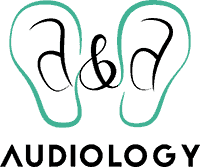- The Connection Between Hearing Loss and Dementia - July 30, 2024
- The Advantages of Rechargeable Hearing Aids - July 16, 2024
- How to Enjoy Music Festivals While Protecting Your Hearing - July 3, 2024
In the classroom environment, hearing plays a major role in effective communication, learning, and overall academic success. However, with the prevalence of noise and other auditory distractions, ensuring optimal hearing health can be a challenge for both teachers and students. Let’s explore the importance of hearing health in the classroom and discuss practical strategies for teachers and students. Together we can promote a supportive listening environment that’s conducive to learning.
Understanding the Impact of Hearing Health in the Classroom
Clear communication is essential for effective teaching and learning in the classroom. When students have difficulty hearing, whether due to noise, distance from the speaker, or underlying hearing loss, their ability to understand and retain information may be compromised. Moreover, students with untreated hearing loss may experience feelings of frustration, isolation, and low self-esteem, which can negatively impact their academic performance and overall well-being.
For teachers, maintaining good hearing health is equally important, as it enables them to effectively deliver instructions, engage with students, and monitor classroom activities. Teachers who experience hearing difficulties may struggle to communicate clearly, manage classroom noise, and provide individualized support to students. This will ultimately hinder the learning experience for everyone.
Creating a Supportive Auditory Environment
Creating a supportive auditory environment in the classroom starts with minimizing noise and other auditory distractions that can interfere with learning. Teachers can:
- Reduce Background Noise: Minimize background noise by closing windows and doors, using carpets or rugs to absorb sound, and avoiding noisy classroom activities during instruction.
- Use Assistive Listening Devices: Utilize assistive listening devices, such as FM systems or personal amplifiers, to enhance speech clarity and improve communication for students with hearing loss.
- Optimize Classroom Acoustics: Arrange classroom furniture and seating to optimize acoustics, ensuring that all students have a clear line of sight to the teacher and minimizing reverberation and echo.
- Encourage Active Listening: Encourage students to actively engage in listening by maintaining eye contact, asking questions, and providing feedback during class discussions.
- Implement Visual Aids: Supplement auditory instruction with visual aids, such as slideshows, diagrams, and videos, to reinforce key concepts and accommodate different learning styles.
Promoting Hearing Health Awareness
Promoting hearing health awareness in the classroom can also empower students to take proactive steps to protect their hearing. Teachers can:
- Educate Students About Hearing Health: Incorporate lessons and activities that raise awareness about the importance of hearing health, the effects of noise exposure, and strategies for protecting hearing.
- Encourage Hearing Screenings: Encourage students to undergo regular hearing screenings to monitor their hearing health and identify any potential concerns.
- Provide Hearing Protection: Educate students about the importance of wearing hearing protection, such as earplugs or earmuffs, in loud environments, such as concerts, sporting events, or recreational activities.
- Model Good Listening Habits: Model good listening habits by speaking clearly, facing the class when speaking, and using appropriate volume and tone of voice during instruction.
Supporting Students with Hearing Loss
For students with hearing loss, additional support and accommodations may be necessary to ensure equal access to education. Teachers can:
- Communicate Clearly: Speak clearly and at a moderate pace, facing the class and using visual cues to reinforce auditory instructions.
- Provide Preferential Seating: Seat students with hearing loss in the front of the classroom to help them hear and participate in class discussions.
- Use Captioned Materials: Use captioned videos and multimedia materials to provide access to auditory content for students with hearing loss.
- Encourage Self-Advocacy: Empower students with hearing loss to advocate for their own needs. This can include strategies for effective communication, self-monitoring, and requesting accommodations.
Support for Teachers and Students
Hearing health plays a critical role in the classroom environment, impacting communication, learning, and academic success for both teachers and students. That’s why it’s so important to create a supportive environment, promote hearing health awareness, and provide targeted support to students with hearing loss. Teachers can foster a positive and inclusive learning environment where all students have the opportunity to thrive. Together, let’s prioritize hearing health in the classroom and ensure that every student has the opportunity to reach their full potential.
If you have a child or teenager and you think they might have hearing loss, call us today to book a hearing test.

